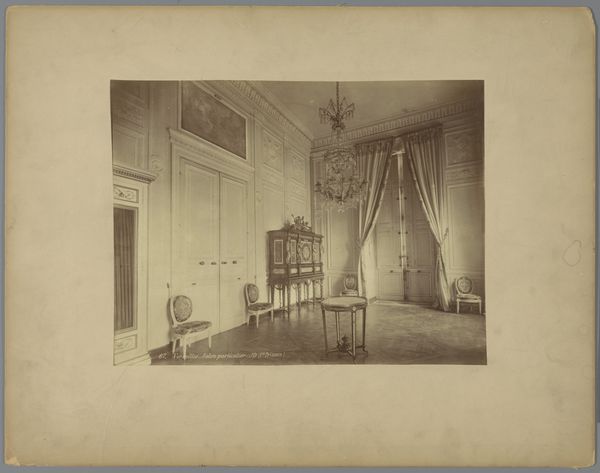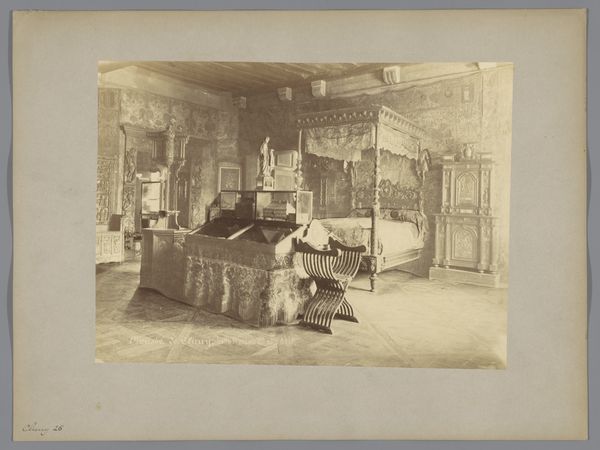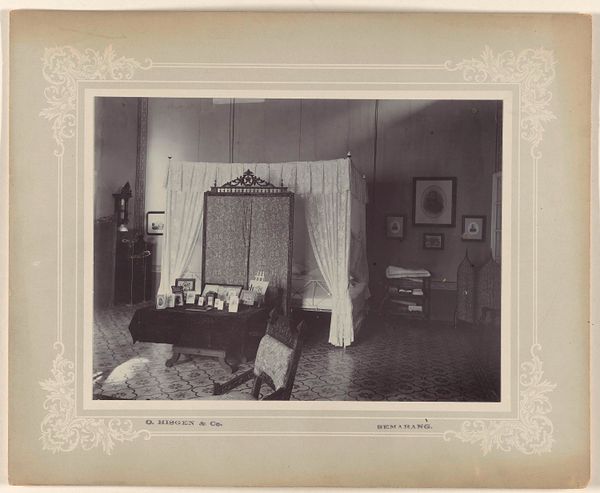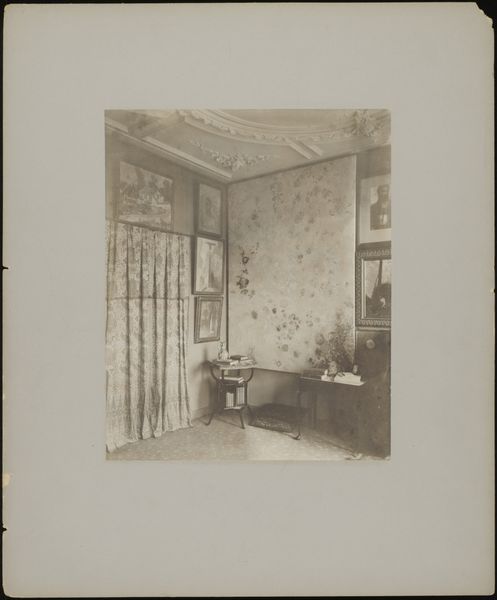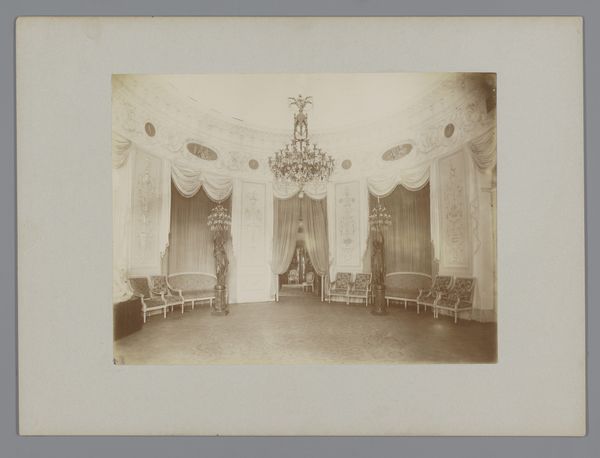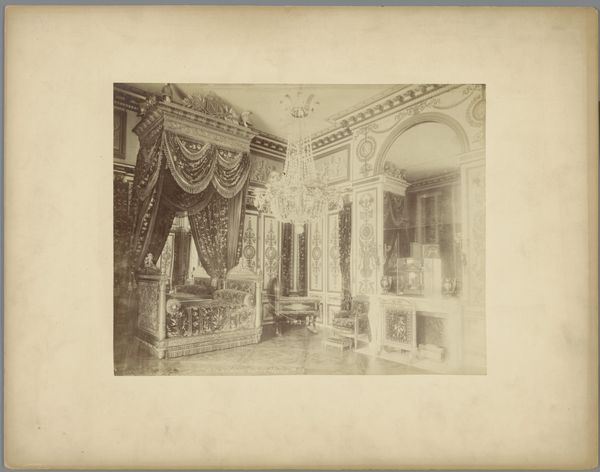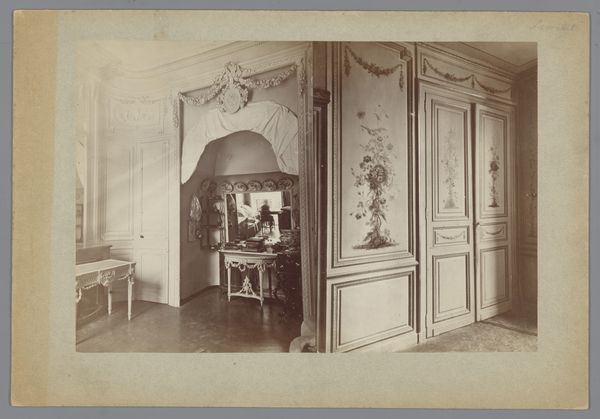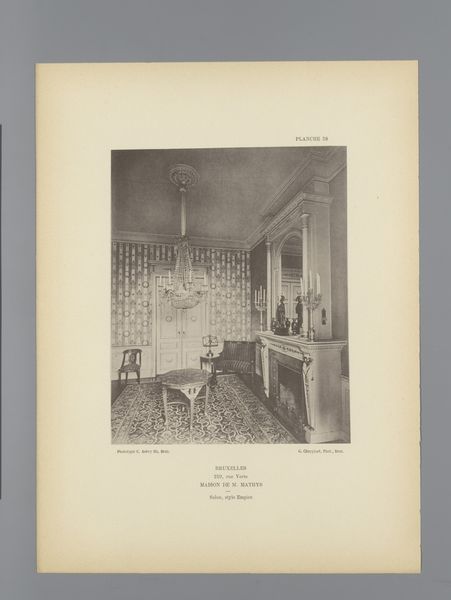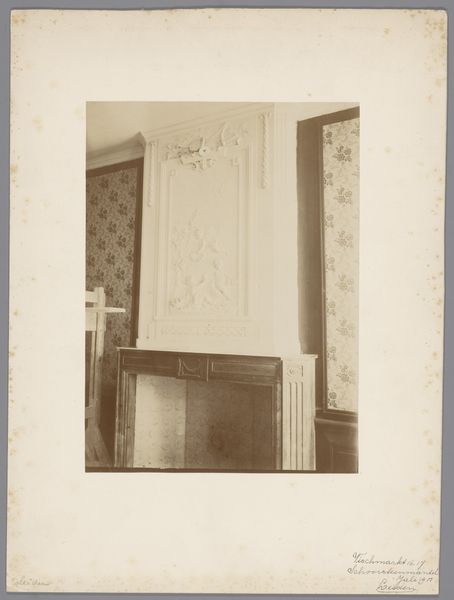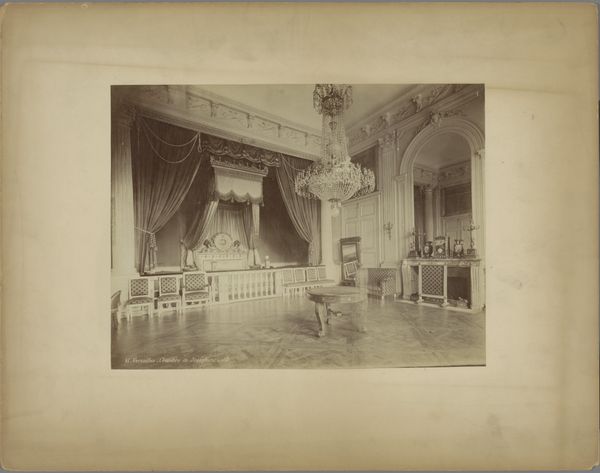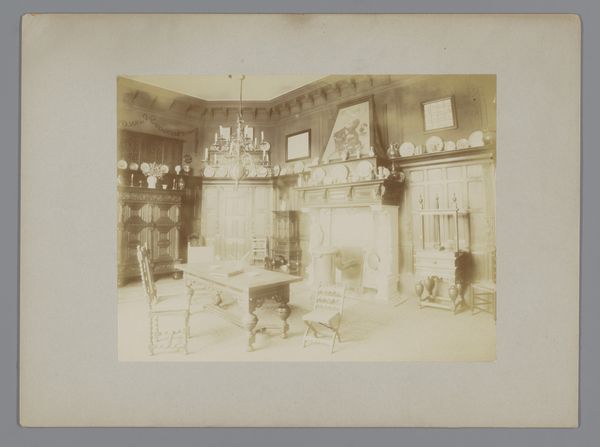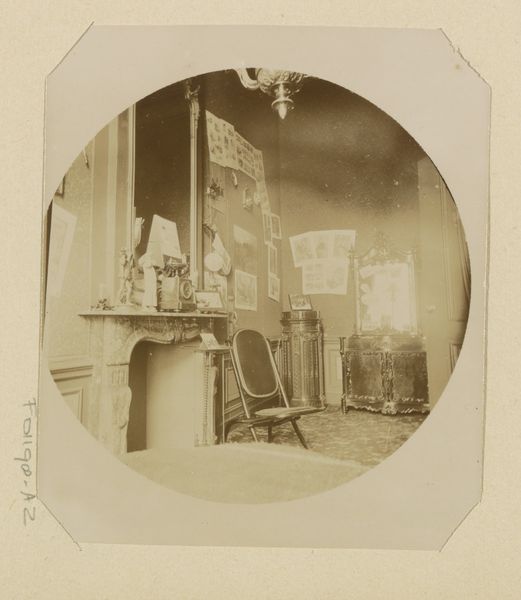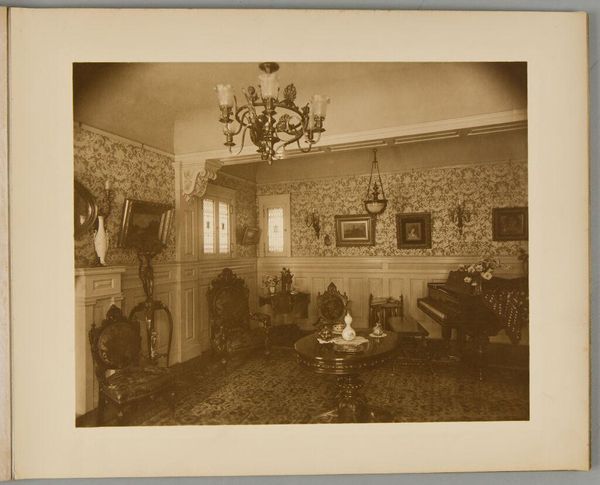
Detail van het doksaal in de kathedraal Saint-Étienne te Limoges c. 1875 - 1900
0:00
0:00
adolphegiraudon
Rijksmuseum
photography, gelatin-silver-print
#
still-life-photography
#
photography
#
gelatin-silver-print
#
realism
Dimensions: height 258 mm, width 190 mm
Copyright: Rijks Museum: Open Domain
Curator: Ah, welcome. Here we have Adolphe Giraudon's "Detail van het doksaal in de kathedraal Saint-Étienne te Limoges," a gelatin-silver print created sometime between 1875 and 1900. Isn't it just drenched in atmosphere? Editor: Drenched is right. I’m immediately struck by the pervasive stillness. It’s as though the very air is holding its breath. Look at that bed, uninhabited, perfectly made… almost funereal. Curator: Funereal? Interesting take. For me, the light elevates it. It captures this particular quality of bourgeois interiors: opulent yet eerily detached, suspended, you know? Like stepping into a time capsule of the late 19th century, a sort of domestic theater where nothing really happens. Editor: The light is compelling, I'll grant you that. The way it illuminates that chandelier... almost ethereal. It feels like the focal point, drawing the eye upward, yet somehow, the space below remains heavy. And observe how Giraudon plays with geometric relationships—the herringbone floor, the rectangular paneling. All carefully structured to create depth and perspective. Curator: Yes, it’s a beautifully composed study of interior space and surface. I think Giraudon saw these spaces, and photographed them with a mind to capture how space shapes one’s feeling about that particular period. What do you suppose the people were really like living within this scene, the very wealthy and leisured? What was it actually *like* for them? Editor: Hard to say from a photograph alone. What is clear is the presentation—the wealth on display. Though realism as a style is often thought of as showing people honestly, the choice of what to focus on is a signal too. The camera here shows us only the furniture. We see no traces of human occupation beyond the meticulous arrangements. What’s not there seems just as significant. Curator: That's very true. And I hadn't thought of that quite so literally. In my imaginings, I tend to put real humans back in this photo. Maybe that betrays my hope to understand the past. Editor: Well, isn’t that what art does—draws out reflections? Giraudon's photograph here does it with formal composition. You seek it with emotive narrative. Perhaps both readings ultimately illuminate our present understanding. Curator: Precisely. Thank you, so interesting as always.
Comments
No comments
Be the first to comment and join the conversation on the ultimate creative platform.
